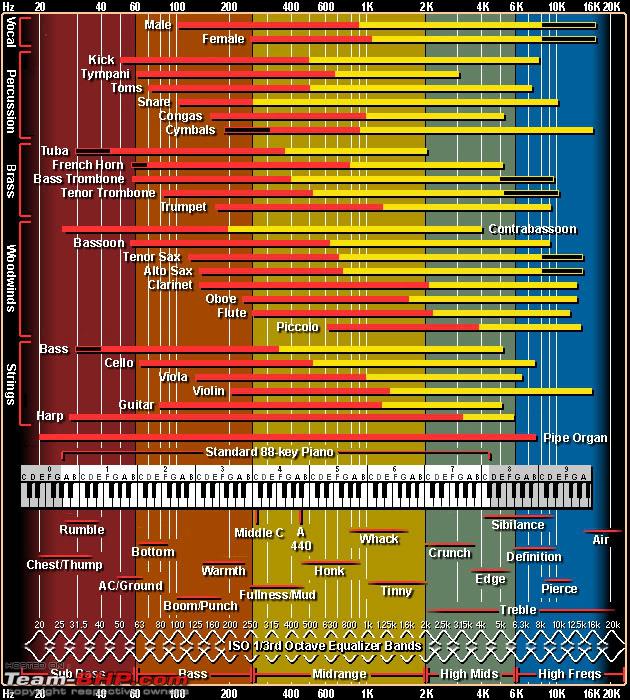megabigeye
Headphoneus Supremus
This is possibly a simple question, but one that I can't quite find a definitive answer on:
What is the typical frequency range of recorded music?
I'm not talking about theoretical limits of instruments or of recording equipment or of human hearing, just the spectrum of frequencies present on most recordings. I specify "most" recordings because I assume there are outliers where some wisecracking musician includes 10Hz and 100kHz "tones;" I'm not really interested in those.
I've come to assume that most music falls between ~30Hz - 16kHz, but I don't know if this is really true.
The reason I'm asking is that I often see a) manufacturers claiming infrasonic-to-ultrasonic frequency response (which I mostly disregard as a load of marketing hooey), and b) head-fiers talking about the importance of the extreme upper and lower limits of their gear.
I apologize if this has been asked and answered elsewhere. I've tried Googling and searching the forums, but I can't find a satisfying answer.
I'm sure there are other related questions that I could also ask, but let's start with the simple stuff.
What is the typical frequency range of recorded music?
I'm not talking about theoretical limits of instruments or of recording equipment or of human hearing, just the spectrum of frequencies present on most recordings. I specify "most" recordings because I assume there are outliers where some wisecracking musician includes 10Hz and 100kHz "tones;" I'm not really interested in those.
I've come to assume that most music falls between ~30Hz - 16kHz, but I don't know if this is really true.
The reason I'm asking is that I often see a) manufacturers claiming infrasonic-to-ultrasonic frequency response (which I mostly disregard as a load of marketing hooey), and b) head-fiers talking about the importance of the extreme upper and lower limits of their gear.
I apologize if this has been asked and answered elsewhere. I've tried Googling and searching the forums, but I can't find a satisfying answer.
I'm sure there are other related questions that I could also ask, but let's start with the simple stuff.





